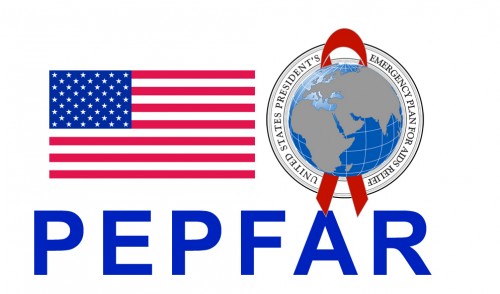On Wednesday, the Congressionally-mandated evaluation of PEPFAR — the President’s Emergency Plan for AIDS Relief — was released. It’s nearly 700 pages long, and I haven’t but skimmed its major headings. But I’m interested in what the reaction has been, and since no one seems to have done it yet that I’ve seen, I thought I’d round up some response from around the Internet.
First, the bare facts. Dr. Robert E. Black, Chair for the Institute of Medicine Committee that wrote the PEPFAR evaluation and a professor of health at Johns Hopkins, writing in The Lancet, says that as of September, PEPFAR had provided 5.1 million people worldwide with anti-retrovirals, or ARVs, drugs that slow the progress of HIV. In 2012 alone, 750,000 pregnant women received ARVs, which prevent mothers from passing the virus on to their unborn children. Black doesn’t cite a budget figure, but the New York Times puts it at “about $38 billion.”
The evaluation, which covers PEPFAR since its inception in 2003, took four years to prepare and includes interviews and data review from 13 PEPFAR partner countries, PEPFAR HQ, and other international HIV prevention and treatment organizations.
Its conclusions include a few standouts. The program is generally doing a good job — not necessarily a given, despite the numbers cited above — but it needs to do yet more. To reach more people, to help countries scale up and sustain their own responses, and — here’s the partisan divide’s favorite part — to do more about sex.
We might as well just deal with this here: Whatever boon it is to public health, PEPFAR is also political. It’s a project of George W. Bush (though some people are chagrined you might not know that), whose name adds fire to any conversation. Fanning partisan flames is the fact that Barack Obama has proposed PEPFAR cuts for FY2013. Like just about any other topic, PEPFAR is ripe for partisan sniping.
Let’s agree not do any of that here, shall we?
But we still have to talk about sex. Sexual transmission of HIV, that is. Black writes, “Even as it maintains its support for interventions that target all modes of HIV transmission, PEPFAR should prioritise reduction of sexual transmission. The unequivocal epidemiological evidence that sexual transmission, with underlying behavioural drivers, is responsible for most new infections is in stark contrast with the mixed availability of evidence that lends support to effective behavioural interventions for prevention.”
In plain English, that sounds to me like Black means this: “We know that new infections from HIV come from risky sex. Telling people not to have sex (‘behavioural interventions’) doesn’t work.”
How to handle the having of sex has long been a controversy. In its first incarnation, PEPFAR funds only went to clinics that followed the ABCs — Abstain, Be Faithful, Use Condoms. There was controversy; just last week, though, Foreign Policy magazine contributing editor and fellow of things international Christian Caryl says we shouldn’t get too worked up about the sex stuff. “[S]ources close to PEPFAR tell me that those restrictions have proven little hindrance on the ground.”(I don’t know how close those sources are to PEPFAR (or how they’re close, which matters), but some sources, who were medical professionals, standing about 18 inches from my face in Rwanda in 2008 told me this was a real problem.)
They’ve since been changed, and today’s “relaxed” rules (from the 2008 reauthorization bill) are that programs dealing with the sexual transmission of HIV must spend at least 50 percent of their funds “for activities promoting abstinence, delay of sexual debut, monogamy, fidelity, and partner reduction.” That probably makes sense in Washington, but it sounds like it’s questionable whether that’s dealing directly enough with the frequency of sexual transmission.
There are, and need to be, other changes too. Black argues that the “emergency” part of the response is mostly over, and that PEPFAR needs to find ways to support long-term, sustainable work by national governments. That can be hard, when an AIDS prevention strategy is one of many priorities for cash-strapped countries.
Here are some other interesting questions being asked around the web:
What didn’t work so well? As you might expect, some of the record-keeping is poor. Some agencies are duplicating services. Compliance — med-speak for taking drugs every day — and access to care are challenges. HIV/AIDS may be PEPFAR’s priority, but it isn’t always the first thing on the minds of national government leaders every day. (These are cribbed from here and here.)
Which countries get how much money and why? Science Magazine points out the part of the report about “great disparities in how much money PEPFAR spends per HIV-infected person in partner countries. At the low end of the scale, Zimbabwe has greater than 10% prevalence of HIV and only receives $25 per infected person from PEPFAR; in contrast, Guyana, which has an HIV prevalence below 10%, receives $3842 per infected person.”
Where does all that money go (through) anyway? The Center for Global Development is releasing its own paper (soon) looking into where PEPFAR funding goes. In 2008, the CGD found, “477 contractors received PEPFAR financing totaling $3.56 billion; the average organization received a reported $7.5 million and the median was $1.5 million. In this 2008 dataset, more than $2 billion (about 58% of the total) was concentrated in 25 contractors (or 5% of all 477 contractors). Nearly all of these 25 contractors were based in the US and included for-profits, non-profits, faith-based organizations, universities, and others. While $686 million was spent through academic institutions, $301 million was allocated to developing-country governments as prime partners who represented 8% of all contractors.” CGD hoped the PEPFAR evaluation might include detail on how these arrangements may have changed over time. Watch that space.
If America stops paying, what comes next? This is the first point Devex highlights. Quoting the report: “The over-reliance on external donor funding in partner countries creates funding fragility and the possibility that the HIV response would be critically disrupted if funding were to be discontinued or severely reduced.” In plainspeak, it would seem, that means that if we cut funding, there’s nothing to replace those 3 million people’s ARVs.
Most Tweeted quote? It seems to me to be this, from IOM Committee Chair Black:
Most popular spinoff? There’s a lot of people who want (you) to sign this. That’s not an endorsement. I’m just telling you what the social media world is doing.
Like I said, I’ve only scratched the surface. What have you seen, read, heard, or said?





